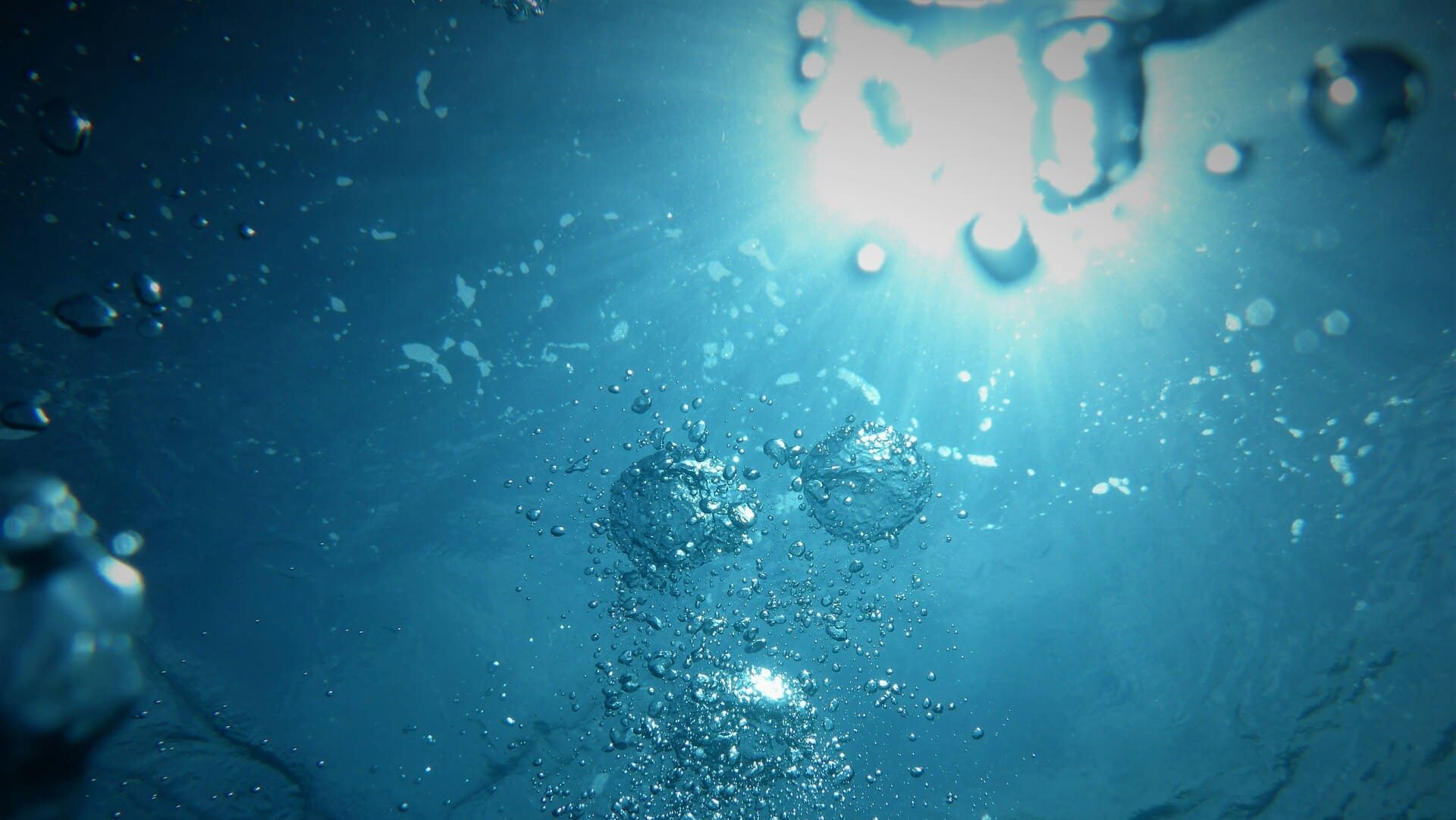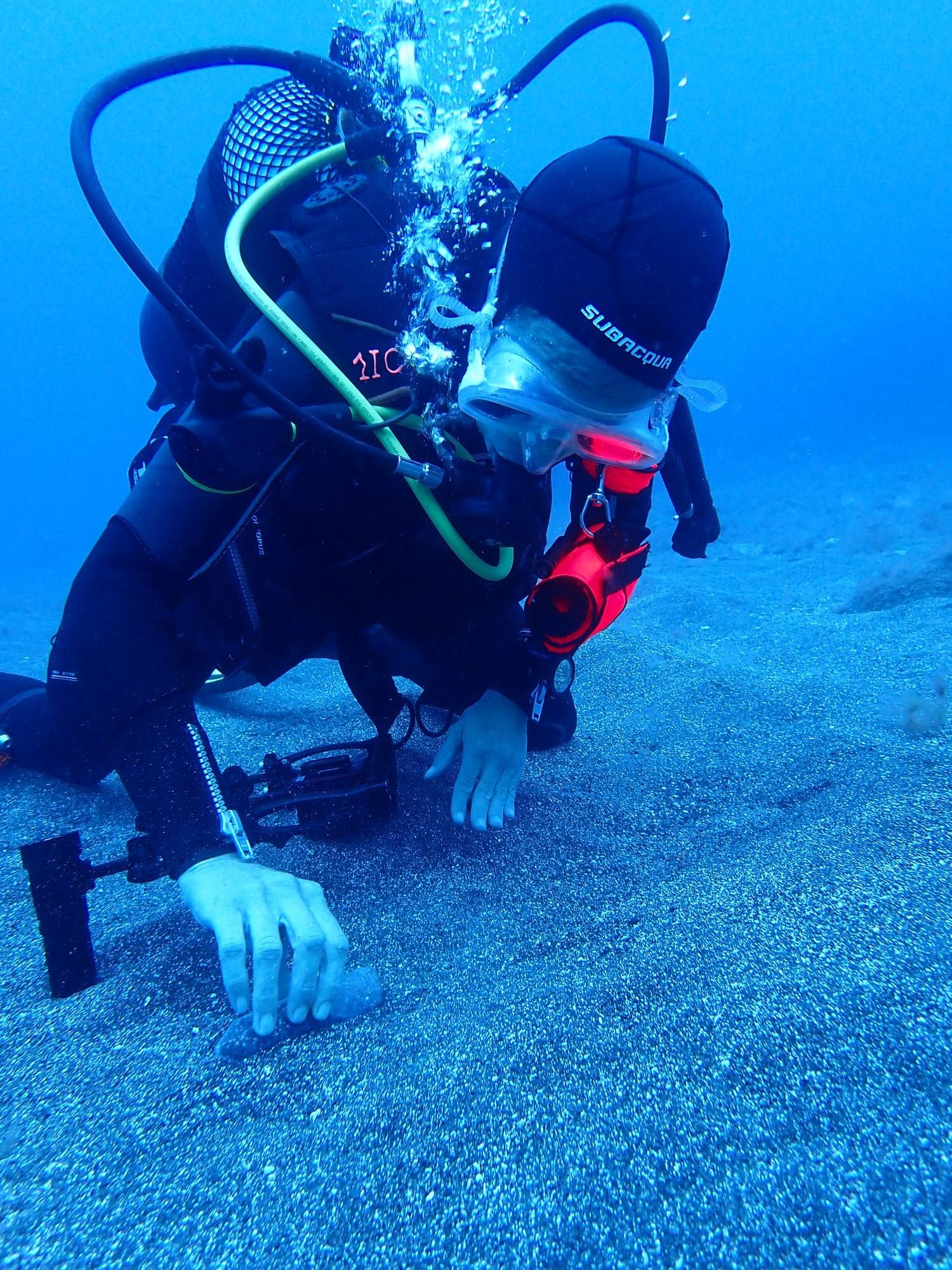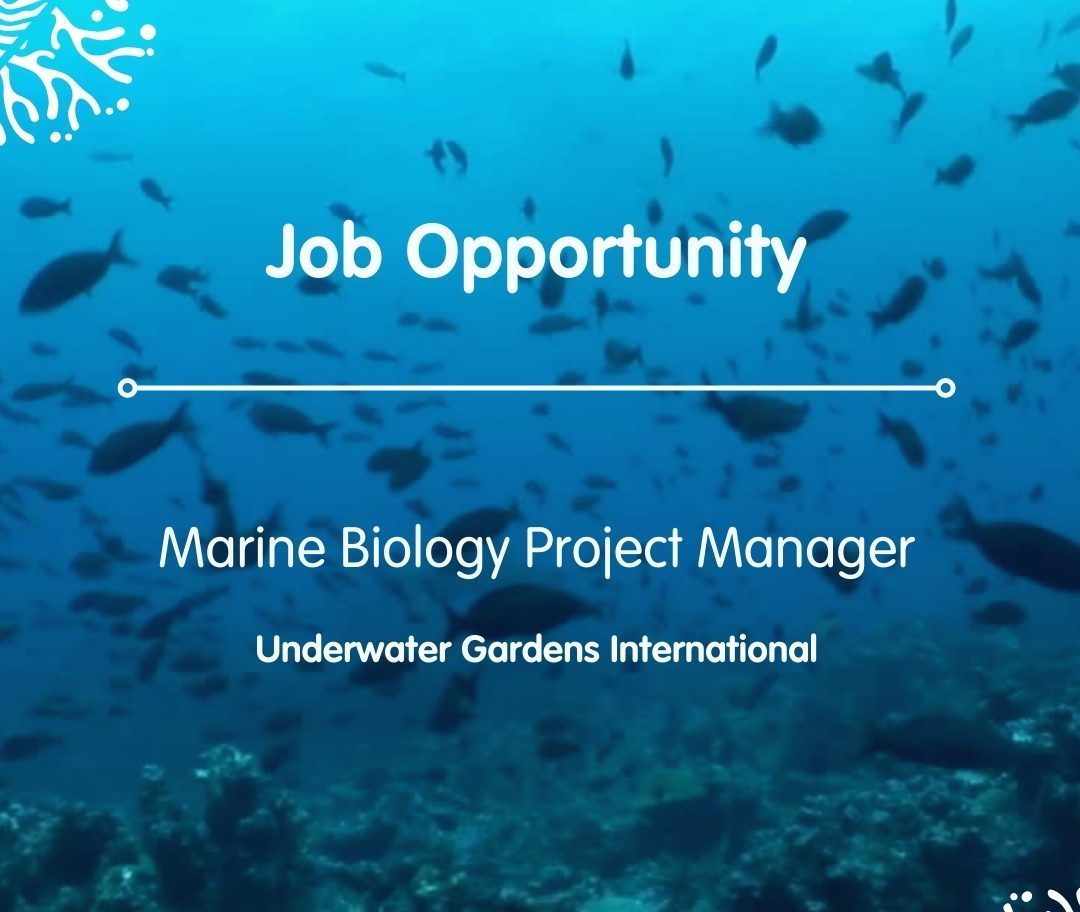Author: Buki Rinkevich
Professor at Israel Oceanographic & Limnological Research – OCEAN CITIZEN PARTNER
Human activity and climate change are globally transforming ecosystems into less diverse forms. Coral reefs are particularly affected by rising seawater temperatures, ocean acidification, and more intense tropical storms, leading to more frequent and severe coral bleaching. These factors exacerbate the already deteriorated state of coral reefs, reducing their ecological resilience and ability to adapt to climate change. Additionally, coral reefs worldwide are increasingly damaged by over-exploitation, physical destruction, pollution, eutrophication, and sediment impacts from agriculture and urban development. The former actions performed, basically based on traditional methods like Marine Protected Areas, have shown poor results, highlighting the necessity for innovative approaches to revive degrading reefs. Furthermore, projections of the continued global decline in coral reef biodiversity and functionality suggest that coral reefs may soon disappear, thus raising the urgent need for active reef restoration activities.
Reef restoration, a new ecological discipline, has gained attention over the past two decades, though many aspects remain unclear. Recognising that passive rehabilitation is insufficient, efforts are now focused on developing effective active restoration tools. One of the most effective coral restoration approaches is the ‘gardening coral reefs’ notion, a marine silviculture tactic. Inspired by forest restoration, it involves two steps: farming corals from small fragments in underwater nurseries and transplanting them onto degraded reefs. Over the past decade, nurseries have been established worldwide, optimising conditions for coral growth and generating significant coral stocks from various sources. Using small fragments further reduces stress on donor colonies, aiding the propagation of rare species. Nurseries allow for re-pruning and intensified production of selected genotypes, and transplanting mature corals enhances acclimatisation and contributes to local coral reproduction. Like terrestrial reforestation, coral transplantation may employ ecological engineering tools, including specific coral species, various genotypes, transplant sizes, compositions, and emerging seascapes.
Ecological engineering and its application to coral reef restoration
Ecological engineering combines biological and ecological principles with engineering, setting it apart from other approaches by addressing the interconnectedness of humans and ecosystems. Its goal is to rehabilitate damaged ecosystems for human benefit, such as improved ecosystem services. This involves enhancing biodiversity and using applied science, ecology, and technology to address human and climate change impacts. Over the past two decades, ecological engineering has integrated mitigation principles and ecological restoration tools. As environmental challenges grow, professionals adapt ecological engineering for sustainability and ecosystem health. Each topic in this field pairs specific ecological issues with technological solutions, focusing on restoration and sustainable ecosystems. Coral reef restoration increasingly uses ecological engineering methods tailored to various aspects of the practice. Yet, while reef-building corals provide positive feedback to reef ecosystems through biophysical interactions, few studies on coral reef restoration have explored or implemented the concepts of "ecological engineering" (EE). Here we’ll highlight three examples (out of more that are developed) that depict the importance of these approaches:
Ecological Engineering (EE) approaches:
One EE approach involves developing two-dimensional flat units of live coral preparative placed like floor tiles, termed ‘tiling the reef’ (Fig. 1). Proof-of-concept results show that small coral nubbins glued closely on flat substrates form thin horizontal layers of tissue and skeleton, fusing within 7-9 months to cover the substrates with live coral tissue completely. This "tiling the reef" method covers large bare reef areas colonised by turf algae or other organisms with live coral tissue, reversing phase shifts. Bare coral skeletons on these tiles become excellent substrates for coral planulae settlement. These units can also coat urbanised reef surfaces and man-made structures like breakwaters, jetties, and seawalls, turning them into features of intertidal and shallow subtidal habitats. The tactic leverages corals’ self-regeneration and self-anchoring abilities, spreading thin layers of calcium-carbonate-covered tissue on surrounding substrates.
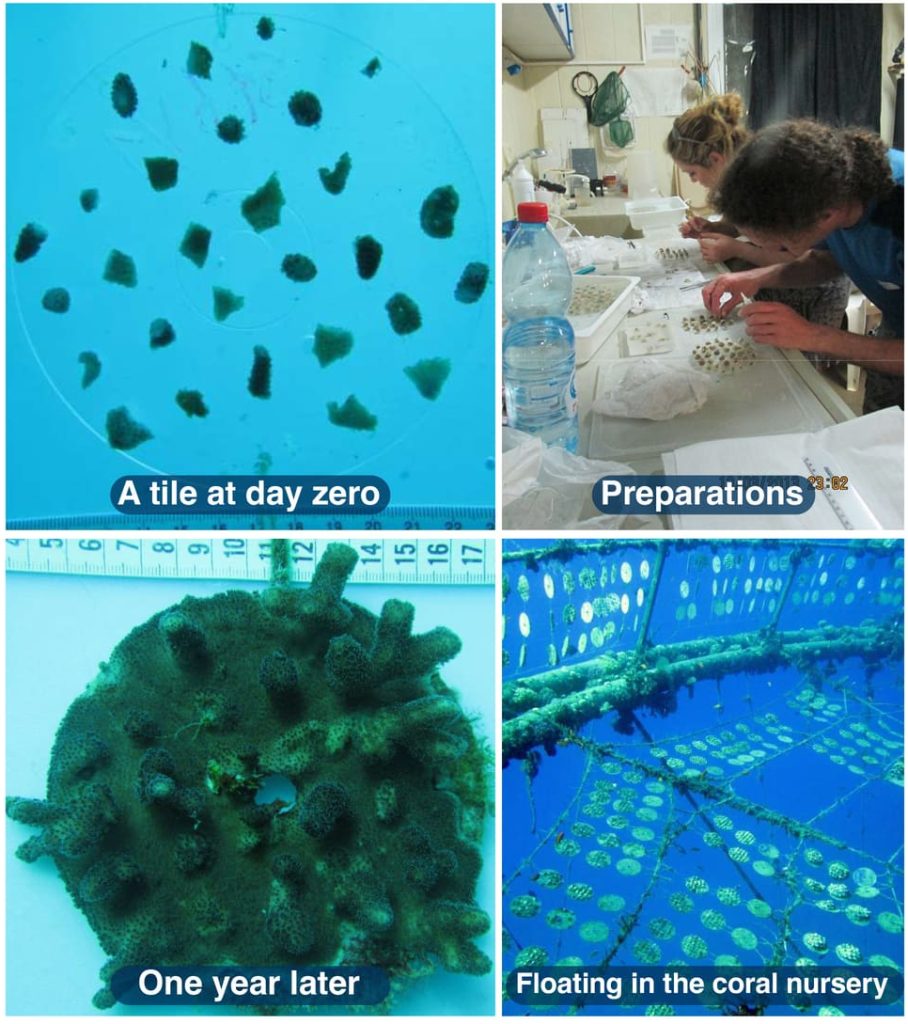
A second EE approach uses coral nurseries as hubs for coral reproduction and seeding degraded reefs. This strategy aims to enhance larval seeding and recruitment in impacted reefs. Studies found that small fragments of the branching coral Stylophora pistillata that are cultured for two years in a mid-water floating nursery, develop into gravid colonies with about 35% more oocytes per polyp than similarly sized colonies on the reef, and that they release more planula larvae. Additionally, nursery-born planulae had more zooxanthellae, contained more chlorophyll, and developed larger young colonies. The research concluded that a coral nursery could produce tens of millions of planula larvae during the reproductive season. Positioned upstream of impacted reefs, such a nursery could act as a "larval dispersion hub," (Fig. 2), serving
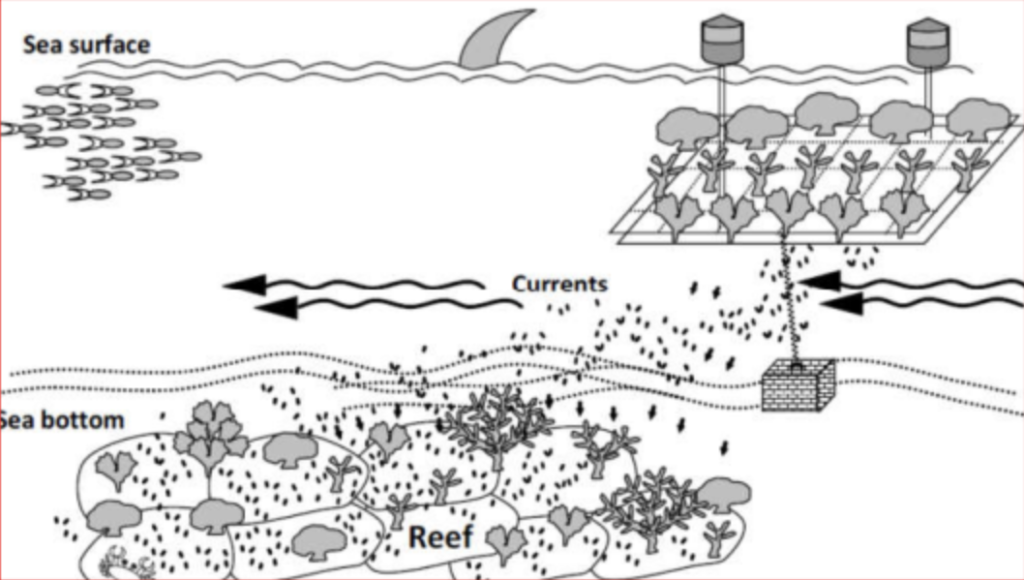
The third EE approach is the coral carpet tool (CC), which draws inspiration from the commercial turf-grass sod in land-based lawn gardening. Farmed-coral transplantation faces several challenges. The predominant method of individually attaching grown colonies is labour-intensive and time-consuming, making it suitable for small-scale efforts. Substrates in many degraded reef areas are unsuitable for coral attachment due to dynamite fishing, sedimentation from land reclamation, or phase shift events. Additionally, current practices overlook the benefits of underwater coral nurseries, which recruit reef-associated organisms. These organisms are also threatened by reef degradation, and incorporating them with farmed colonies could enhance biodiversity. And indeed, transplantation methods that include nursery-associated reef biota are not yet available. This CC tool includes, as an integral part of reef restoration, the inclusion of reef fauna that naturally develops within and among the growing corals in the nursery to be transplanted together with the corals, thus allowing the immediate formation of a structure resembling a natural reef (Fig. 3). This approach is primarily useful to create new coral reefs on various unstable soft bottom.
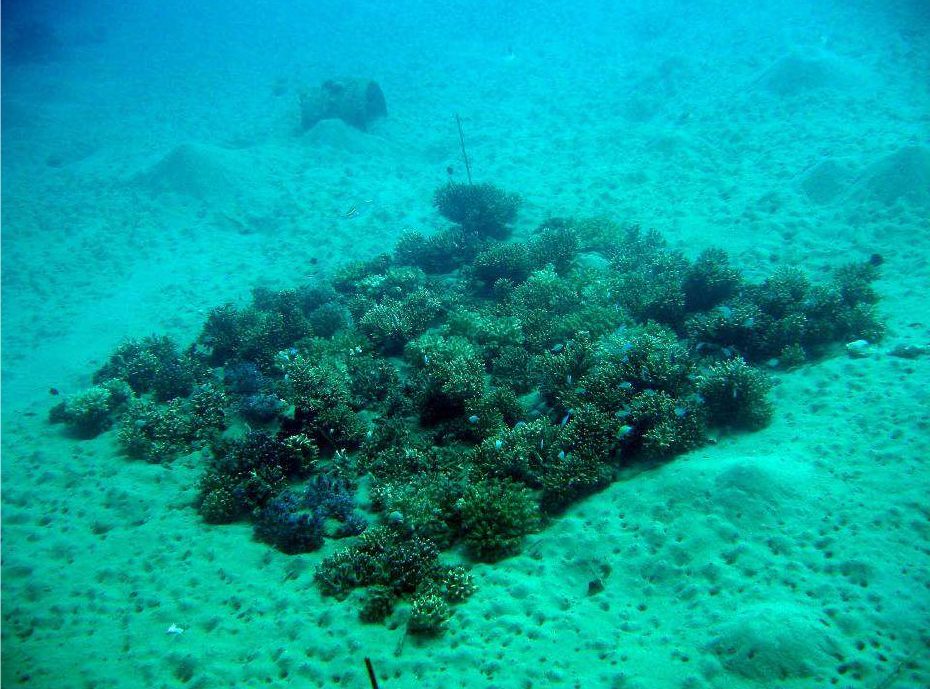
The above-mentioned EE approaches and others that are either already employed or are developing, all improve the tools available for coral reef restoration, adding benefits for the basic components of coral reef restoration.
“If we don’t wisely restore the ‘reefs of today’, the ‘reefs of tomorrow’ will slip away.”
– Buki Rinkevich
